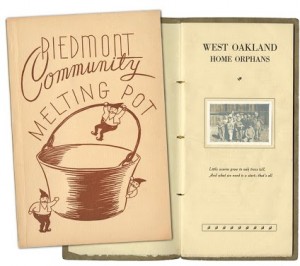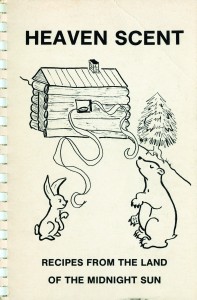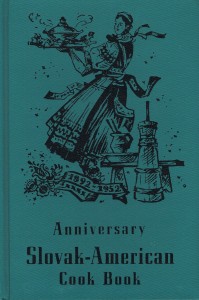Ferguson, Kennan. “Intensifying Taste, Intensifying Identity: Collectivity through Community Cookbooks.” Signs 37.3 (2012): 695-717. Print.
Intensifying Identity through Community Cookbooks
In Intensifying Taste, Intensifying Identity: Collectivity through Community Cookbooks (2012), Kennan Ferguson argues how community cookbooks embody collective taste and social guidelines within groups and create a sense of belonging by and for women in the community. Ferguson begins by discussing how these publications convey a shared taste influenced by race, region, socio-economic class and religion, then explains how communities are built through that collective taste. The author’s purpose is to examine how community cookbooks intensify communal bonds by reinforcing value systems and social standings in a group within the community. This article was originally published in the journal Signs and the author is addressing scholars who are interested in the development of female identity through the study of community cookbooks and how they encourage readers to create their own identities within a community.
The Power of Sugar and Spice
Often community cookbooks were given to members of the community to remind them of who they were and what they stood for. These social guidelines provide the parameters for shared tastes. Throughout the article Ferguson expresses that community cookbooks emerge not only because of common values, but also a liking for similar seasoning and sweetness. The recipes are not divided into individual contributors, but instead authored and edited by committees, churches and groups that share a particular taste.
Often the same women who create these cookbooks are also the target audience. Ferguson highlights this in her explanation of Texas’ women’s auxiliary community cookbooks. “Mexican” recipes are less about the authentic flavor, and have been renamed and remade to give it a more Anglo flavor. This communal taste is filtered through region, race, culture and class of the women that make up the group.
Community cookbooks reinforce regionality by highlighting ingredients that are unique to the region. In the Anchorage Women’s Club’s cookbook, they present several recipes using moose, emphasizing that the audience of the cookbook is intended to be women from the same region. Ferguson indicates that in order for cookbooks to be successful in a community they must embrace what is local. For community members who live in more rural areas, region based community cookbooks generate a sense of harmony with a much larger community. Recipes are often passed on and learned from neighbors that are made using the resources available.
Race and Class in Community Cookbooks
While preferences differ greatly from region to region, class has an equally if not larger impact in discerning taste. Patterns of social relations and political histories are submerged throughout cookbook texts. Ferguson discusses how during the Great Depression many cookbooks focused on saving money by creating “mock” dishes that mimicked real tasting food with ingredients that were more cost efficient. Some cookbooks are aimed at higher classes by including more ornate ingredients with a greater emphasis on presentation.
Racial identities in cookbooks are not limited to skin color but are comprised of rich traditions and an ethnic history. Many cookbooks address specific family recipes and religious traditions in an attempt to distinguish themselves in a larger social context. Ferguson states that in America, identity is closely linked to a concept of race. In many early cookbooks there was attempt to neutralize recipes in wording in order to assimilate into the culture. By including background information, these cookbooks seem to be directed less at the community and more to the outside world.
Community Cookbooks in the Digital Age
It is undeniable that those who participated in the collection and organization of recipes were part of a rich, community building experience. Although we do see similar communities online today-compiling niche recipes and creating blogs about food–we have to wonder how concepts of taste and identity impact these groups. Online communities no longer reinforce shared values but instead bridge across lines of race, class and region. We now see examples of websites focused on eating gourmet on a budget or middle eastern cooking in midwest kitchens. This could also be because now more than ever we have access to ingredients from all over the world in our local grocery stores. The abundance of community blogs about cooking allow the reader to choose recipes through pure exploration rather than just accessibility. Taste is evolving past what your mother made you. Identity is expanding through technology, bringing new traditions into our kitchens and creating a community of people wanting shared experiences rather than shared values.



